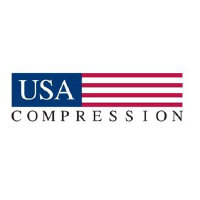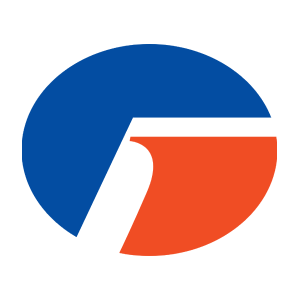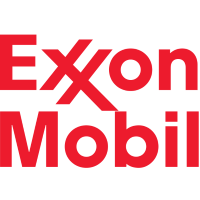
Exxon Mobil Corp
NYSE:XOM


| US |

|
Johnson & Johnson
NYSE:JNJ
|
Pharmaceuticals
|
| US |

|
Berkshire Hathaway Inc
NYSE:BRK.A
|
Financial Services
|
| US |

|
Bank of America Corp
NYSE:BAC
|
Banking
|
| US |

|
Mastercard Inc
NYSE:MA
|
Technology
|
| US |

|
UnitedHealth Group Inc
NYSE:UNH
|
Health Care
|
| US |

|
Exxon Mobil Corp
NYSE:XOM
|
Energy
|
| US |

|
Pfizer Inc
NYSE:PFE
|
Pharmaceuticals
|
| US |

|
Palantir Technologies Inc
NYSE:PLTR
|
Technology
|
| US |

|
Nike Inc
NYSE:NKE
|
Textiles, Apparel & Luxury Goods
|
| US |

|
Visa Inc
NYSE:V
|
Technology
|
| CN |

|
Alibaba Group Holding Ltd
NYSE:BABA
|
Retail
|
| US |

|
JPMorgan Chase & Co
NYSE:JPM
|
Banking
|
| US |

|
Coca-Cola Co
NYSE:KO
|
Beverages
|
| US |

|
Walmart Inc
NYSE:WMT
|
Retail
|
| US |

|
Verizon Communications Inc
NYSE:VZ
|
Telecommunication
|
| US |

|
Chevron Corp
NYSE:CVX
|
Energy
|
Utilize notes to systematically review your investment decisions. By reflecting on past outcomes, you can discern effective strategies and identify those that underperformed. This continuous feedback loop enables you to adapt and refine your approach, optimizing for future success.
Each note serves as a learning point, offering insights into your decision-making processes. Over time, you'll accumulate a personalized database of knowledge, enhancing your ability to make informed decisions quickly and effectively.
With a comprehensive record of your investment history at your fingertips, you can compare current opportunities against past experiences. This not only bolsters your confidence but also ensures that each decision is grounded in a well-documented rationale.
Do you really want to delete this note?
This action cannot be undone.

| 52 Week Range |
99.93
119.29
|
| Price Target |
|
We'll email you a reminder when the closing price reaches USD.
Choose the stock you wish to monitor with a price alert.

|
Johnson & Johnson
NYSE:JNJ
|
US |

|
Berkshire Hathaway Inc
NYSE:BRK.A
|
US |

|
Bank of America Corp
NYSE:BAC
|
US |

|
Mastercard Inc
NYSE:MA
|
US |

|
UnitedHealth Group Inc
NYSE:UNH
|
US |

|
Exxon Mobil Corp
NYSE:XOM
|
US |

|
Pfizer Inc
NYSE:PFE
|
US |

|
Palantir Technologies Inc
NYSE:PLTR
|
US |

|
Nike Inc
NYSE:NKE
|
US |

|
Visa Inc
NYSE:V
|
US |

|
Alibaba Group Holding Ltd
NYSE:BABA
|
CN |

|
JPMorgan Chase & Co
NYSE:JPM
|
US |

|
Coca-Cola Co
NYSE:KO
|
US |

|
Walmart Inc
NYSE:WMT
|
US |

|
Verizon Communications Inc
NYSE:VZ
|
US |

|
Chevron Corp
NYSE:CVX
|
US |
This alert will be permanently deleted.
Exxon Mobil Corp
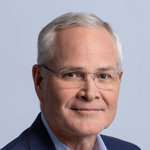

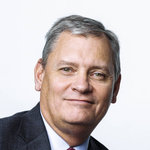


Exxon Mobil Corp., a stalwart of the energy sector, traces its roots back to John D. Rockefeller's Standard Oil, and today stands as one of the largest publicly traded energy providers in the world. Operating in over 200 countries, Exxon Mobil is deeply involved in nearly every aspect of the oil and gas industry, from exploration and extraction to refining, distribution, and sales. At the heart of Exxon's operations is its integrated business model that weaves together its upstream, downstream, and chemical segments. Upstream, Exxon explores and extracts crude oil and natural gas from reserves globally, leveraging advanced technologies and strategic partnerships. The company’s downstream operations then refine these resources into petroleum products, offering a wide range of fuels, lubricants, and petrochemicals.
In its quest to capture value across the supply chain, Exxon Mobil also engages in marketing these products to commercial, industrial, and retail consumers worldwide. Their extensive global reach in logistics and distribution ensures the efficient delivery of products, which is crucial to maintaining competitive advantages and operational efficiencies. Furthermore, the chemicals segment plays a vital role in transforming byproducts of the refining process into high-value chemical products, diversifying their revenue streams. By focusing on integration and strategic investments in technology and resource management, Exxon Mobil not only responds to market demands but also positions itself to adapt to future shifts within the energy landscape, pursuing initiatives in sustainable energy as part of its long-term strategic evolution.

Exxon Mobil Corp., a stalwart of the energy sector, traces its roots back to John D. Rockefeller's Standard Oil, and today stands as one of the largest publicly traded energy providers in the world. Operating in over 200 countries, Exxon Mobil is deeply involved in nearly every aspect of the oil and gas industry, from exploration and extraction to refining, distribution, and sales. At the heart of Exxon's operations is its integrated business model that weaves together its upstream, downstream, and chemical segments. Upstream, Exxon explores and extracts crude oil and natural gas from reserves globally, leveraging advanced technologies and strategic partnerships. The company’s downstream operations then refine these resources into petroleum products, offering a wide range of fuels, lubricants, and petrochemicals.
In its quest to capture value across the supply chain, Exxon Mobil also engages in marketing these products to commercial, industrial, and retail consumers worldwide. Their extensive global reach in logistics and distribution ensures the efficient delivery of products, which is crucial to maintaining competitive advantages and operational efficiencies. Furthermore, the chemicals segment plays a vital role in transforming byproducts of the refining process into high-value chemical products, diversifying their revenue streams. By focusing on integration and strategic investments in technology and resource management, Exxon Mobil not only responds to market demands but also positions itself to adapt to future shifts within the energy landscape, pursuing initiatives in sustainable energy as part of its long-term strategic evolution.
Record Earnings: ExxonMobil delivered its highest earnings per share for a third quarter in a comparable price environment.
Production Milestones: Guyana hit record output over 700,000 barrels per day and the Permian Basin set another production record nearing 1.7 million oil-equivalent barrels per day.
CapEx Guidance: Full-year capital expenditures are expected below the previously guided $27–29 billion range (excluding acquisitions), mainly due to pacing in low carbon investments.
Innovation Highlight: Advanced proprietary proppant and other technologies are credited with boosting Permian recoveries and operational efficiency.
Strategic Acquisitions: $2.4 billion in acquisitions this quarter, including new assets in the Midland Basin and key assets from Superior Graphite.
Cost Savings: ExxonMobil has achieved $14.3 billion in structural cost reductions since 2019.
Dividend Track Record: The company has increased its dividend for 43 consecutive years, emphasizing sustainability and resilience across cycles.
Refining & Product Upgrades: Singapore's resid upgrade project launched, converting low-value fuel to high-value lubricants and diesel, with utilization at 80% and ramping to full capacity.
Management

Darren W. Woods is the Chairman and Chief Executive Officer of Exxon Mobil Corporation, one of the world's largest publicly traded energy providers and chemical manufacturers. He joined Exxon Company International in 1992 and over the years, he has held several key roles within the company, gaining extensive experience across various sectors of the business. Woods was named CEO and Chairman of the Board in January 2017, succeeding Rex Tillerson. Under his leadership, ExxonMobil has focused on improving the company's financial performance, developing advanced technologies, and advancing efforts to address climate change through innovative energy solutions. He holds a Bachelor's degree in Electrical Engineering from Texas A&M University and a Master of Business Administration from Northwestern University's Kellogg School of Management. Woods' career with ExxonMobil reflects a deep understanding of the energy industry and a commitment to the company's long-term vision in balancing energy demands with environmental stewardship. His leadership strategy has also emphasized operational efficiencies, strategic investments, and the expansion of ExxonMobil's global reach.

Woods was named CEO and Chairman of the Board in January 2017, succeeding Rex Tillerson. Under his leadership, ExxonMobil has focused on improving the company's financial performance, developing advanced technologies, and advancing efforts to address climate change through innovative energy solutions.
He holds a Bachelor's degree in Electrical Engineering from Texas A&M University and a Master of Business Administration from Northwestern University's Kellogg School of Management. Woods' career with ExxonMobil reflects a deep understanding of the energy industry and a commitment to the company's long-term vision in balancing energy demands with environmental stewardship. His leadership strategy has also emphasized operational efficiencies, strategic investments, and the expansion of ExxonMobil's global reach.

Kathryn A. Mikells is a prominent financial executive who serves as the Chief Financial Officer (CFO) of Exxon Mobil Corporation. She joined ExxonMobil in August 2021, bringing with her extensive experience in financial management and leadership across various industries. Before joining ExxonMobil, Mikells held several significant roles in leading global companies. She served as the CFO at Diageo plc, a multinational alcoholic beverages company. Her career also includes executive roles at Xerox Corporation and ADT Inc., where she similarly focused on financial strategy and operations. Mikells has been recognized for her ability to drive financial transformation and growth, enhancing operational efficiency and shareholder value. Mikells holds a bachelor's degree and an MBA from the University of Chicago. Her education and professional background have equipped her with a strong foundation in financial strategy, governance, and global business operations, making her a valuable asset to ExxonMobil as it navigates the complex energy landscape. Her role as CFO at ExxonMobil involves overseeing the company's global financial activities, including financial planning, management of financial risks, record-keeping, and financial reporting.

Before joining ExxonMobil, Mikells held several significant roles in leading global companies. She served as the CFO at Diageo plc, a multinational alcoholic beverages company. Her career also includes executive roles at Xerox Corporation and ADT Inc., where she similarly focused on financial strategy and operations. Mikells has been recognized for her ability to drive financial transformation and growth, enhancing operational efficiency and shareholder value.
Mikells holds a bachelor's degree and an MBA from the University of Chicago. Her education and professional background have equipped her with a strong foundation in financial strategy, governance, and global business operations, making her a valuable asset to ExxonMobil as it navigates the complex energy landscape. Her role as CFO at ExxonMobil involves overseeing the company's global financial activities, including financial planning, management of financial risks, record-keeping, and financial reporting.

Jack P. Williams Jr. is a prominent executive at Exxon Mobil Corp, where he has held several key positions throughout his career. Educated in petroleum engineering at Texas A&M University, Williams has applied his expertise in various leadership roles within the company. Williams joined ExxonMobil in 1987 and has amassed extensive experience in refining, supply, and project development. His career has included significant international assignments, providing him with a global perspective on the oil and gas industry. Over the years, he has tackled multiple roles that have sharpened his management and operational skills, contributing to his reputation as an effective leader within ExxonMobil. As a senior vice president, Williams' responsibilities have included overseeing the company's upstream business operations, focusing on oil and gas exploration and development. His work ensures that ExxonMobil maintains its position as a leader in the energy sector, and he is recognized for his strategic vision and commitment to sustainable and efficient energy practices. Williams is also known for promoting technological innovation within ExxonMobil, enhancing both productivity and safety standards. His leadership has played a critical role in steering the company's strategic direction and maintaining its competitive edge in the highly dynamic global energy market. Throughout his tenure, Jack P. Williams Jr. has consistently demonstrated a dedication to advancing ExxonMobil's long-term growth and success while navigating the complexities of the global energy landscape.

Williams joined ExxonMobil in 1987 and has amassed extensive experience in refining, supply, and project development. His career has included significant international assignments, providing him with a global perspective on the oil and gas industry. Over the years, he has tackled multiple roles that have sharpened his management and operational skills, contributing to his reputation as an effective leader within ExxonMobil.
As a senior vice president, Williams' responsibilities have included overseeing the company's upstream business operations, focusing on oil and gas exploration and development. His work ensures that ExxonMobil maintains its position as a leader in the energy sector, and he is recognized for his strategic vision and commitment to sustainable and efficient energy practices.
Williams is also known for promoting technological innovation within ExxonMobil, enhancing both productivity and safety standards. His leadership has played a critical role in steering the company's strategic direction and maintaining its competitive edge in the highly dynamic global energy market.
Throughout his tenure, Jack P. Williams Jr. has consistently demonstrated a dedication to advancing ExxonMobil's long-term growth and success while navigating the complexities of the global energy landscape.

Karen T. McKee is a prominent business executive known for her significant contributions to the energy industry during her tenure at Exxon Mobil Corporation. She served as President of ExxonMobil Chemical Company, one of the world's leading petrochemical companies and a division of Exxon Mobil Corporation. In her role, Ms. McKee was responsible for overseeing the global chemical business, which involves the production and marketing of a wide range of petrochemicals used in various industries. Ms. McKee joined ExxonMobil in 1990 and has held various technical and managerial positions throughout her career. Her roles have spanned across different areas, including refining, supply and trading, and corporate planning. These diverse experiences equipped her with a broad understanding of the complexities of the energy and chemical industries. As a leader, Karen McKee is recognized for her strategic vision and her commitment to operational excellence and safety. She has been instrumental in driving innovations and efficiencies within ExxonMobil Chemical, aligning with the industry’s evolving landscape and the company’s long-term goals. Her leadership extended beyond business operations; she was also an advocate for diversity and inclusion within the workplace, actively promoting initiatives that support the professional development of women and minority groups in the industry. Ms. McKee's influence and leadership have been pivotal in maintaining ExxonMobil Chemical's position as a leader in the global petrochemical market, particularly during times of significant industry shifts and challenges.

Ms. McKee joined ExxonMobil in 1990 and has held various technical and managerial positions throughout her career. Her roles have spanned across different areas, including refining, supply and trading, and corporate planning. These diverse experiences equipped her with a broad understanding of the complexities of the energy and chemical industries.
As a leader, Karen McKee is recognized for her strategic vision and her commitment to operational excellence and safety. She has been instrumental in driving innovations and efficiencies within ExxonMobil Chemical, aligning with the industry’s evolving landscape and the company’s long-term goals.
Her leadership extended beyond business operations; she was also an advocate for diversity and inclusion within the workplace, actively promoting initiatives that support the professional development of women and minority groups in the industry.
Ms. McKee's influence and leadership have been pivotal in maintaining ExxonMobil Chemical's position as a leader in the global petrochemical market, particularly during times of significant industry shifts and challenges.


Jeffrey A. Taylor is a notable executive at Exxon Mobil Corporation, where he serves as the Vice President of Corporate Financial Services and Treasurer. In this role, he is responsible for managing the company's financial policies, structuring financial strategies, and overseeing ExxonMobil's treasury operations, which includes optimizing capital resources, managing corporate finance operations, and ensuring the corporation’s financial health and liquidity. Taylor has been with ExxonMobil for over three decades, accumulating extensive experience in various financial and operational capacities. He has held several key positions within the company, contributing to its global financial strategy and operations. His leadership is marked by a focus on financial efficiency and maintaining a robust balance sheet, which are critical in navigating the challenges of the energy sector. Throughout his career at ExxonMobil, Taylor has demonstrated a strong commitment to financial integrity and strategic planning, making significant impacts on the company's financial operations and contributing to its long-term success.

Taylor has been with ExxonMobil for over three decades, accumulating extensive experience in various financial and operational capacities. He has held several key positions within the company, contributing to its global financial strategy and operations. His leadership is marked by a focus on financial efficiency and maintaining a robust balance sheet, which are critical in navigating the challenges of the energy sector.
Throughout his career at ExxonMobil, Taylor has demonstrated a strong commitment to financial integrity and strategic planning, making significant impacts on the company's financial operations and contributing to its long-term success.

Tracey C. Gunnlaugsson is a notable executive at ExxonMobil, holding the position of Vice President of Global LNG (Liquefied Natural Gas). She is recognized for her extensive experience and leadership in the energy sector, particularly in natural gas and LNG markets. Gunnlaugsson’s career at ExxonMobil has spanned several important roles, demonstrating her expertise in strategic planning, operations, and environmental policy. She has contributed significantly to the corporation's global LNG strategies, helping to navigate the complexities of the global energy market and expand ExxonMobil’s LNG portfolio. In addition to her professional accomplishments, she is also known for being an advocate for environmental stewardship and sustainable development within the energy industry. Her leadership style emphasizes collaboration, innovation, and efficiency, traits that have been instrumental in her successful tenure at ExxonMobil.

Gunnlaugsson’s career at ExxonMobil has spanned several important roles, demonstrating her expertise in strategic planning, operations, and environmental policy. She has contributed significantly to the corporation's global LNG strategies, helping to navigate the complexities of the global energy market and expand ExxonMobil’s LNG portfolio.
In addition to her professional accomplishments, she is also known for being an advocate for environmental stewardship and sustainable development within the energy industry. Her leadership style emphasizes collaboration, innovation, and efficiency, traits that have been instrumental in her successful tenure at ExxonMobil.
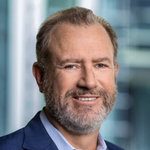
Daniel L. Ammann is a notable figure in the energy sector, known for his role at ExxonMobil Corporation. Prior to joining ExxonMobil, Ammann had an extensive and successful career in the automotive industry. He served as the President of General Motors from 2014 to 2018, where he was responsible for leading the company’s operations and driving significant business strategies and transformations. In 2019, Ammann transitioned to the role of CEO at Cruise, a self-driving car subsidiary of General Motors, focusing on advancing autonomous vehicle technology. His leadership at Cruise was marked by efforts to position the company at the forefront of the autonomous vehicle industry. In 2021, Daniel Ammann joined ExxonMobil as the President of ExxonMobil Low Carbon Solutions. In this role, he oversees the company’s initiatives and strategies aimed at reducing carbon emissions and advancing ExxonMobil's contributions to a lower carbon future. His expertise in operations and business strategy is instrumental in driving ExxonMobil’s commitment to addressing climate change through innovative solutions. Ammann's diverse experience in both the automotive and energy sectors underscores his role as a key leader in navigating the evolving landscape of sustainable energy and technology.

In 2019, Ammann transitioned to the role of CEO at Cruise, a self-driving car subsidiary of General Motors, focusing on advancing autonomous vehicle technology. His leadership at Cruise was marked by efforts to position the company at the forefront of the autonomous vehicle industry.
In 2021, Daniel Ammann joined ExxonMobil as the President of ExxonMobil Low Carbon Solutions. In this role, he oversees the company’s initiatives and strategies aimed at reducing carbon emissions and advancing ExxonMobil's contributions to a lower carbon future. His expertise in operations and business strategy is instrumental in driving ExxonMobil’s commitment to addressing climate change through innovative solutions.
Ammann's diverse experience in both the automotive and energy sectors underscores his role as a key leader in navigating the evolving landscape of sustainable energy and technology.

